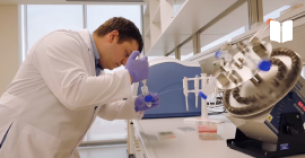Biomaterials are materials designed to support, replace, or fully take over the functions of tissues and organs in the human body. They do not necessarily have to be of biological origin; they can be produced from metals, ceramics, natural or synthetic polymers, and their composites. Examples of biomaterials include metals such as titanium and cobalt-chromium alloys, ceramics like alumina and hydroxyapatite, and certain carbon structures. Among these, carbon nanotubes have contributed to surface property modifications of materials and products, enhancing conductivity, alignment, and reinforcement. These properties enable their use in forming tissues such as heart muscle and nerve tissue.
Four-dimensional materials, which change shape and size over time in response to stimuli (shape-memory materials), have opened new fields, including cell sheet engineering. Natural and synthetic hydrogels, medical-grade three-dimensional (3D) printing filaments, and graphenes have significantly contributed to biomaterials in diverse ways. In particular, pure carbon structures have played a key role in creating surfaces that prevent cell adhesion. The advancements in biomaterials have progressed to the point where applications that once seemed like science fiction—such as 3D printing directly onto a patient's injured tissue during surgery—are now becoming a reality.
Tissue models are a type of tissue engineering product developed and used not for implantation into the body but as an alternative to test animals. Microfluidic technologies also enable rapid interaction studies with minimal samples and facilitate drug screening. In this context, micro-electro-mechanical systems (MEMS) technology has begun to contribute. This technology allows for nano- and micro-scale patterning on materials and transferring these patterns to other materials. In reality, human tissue transmits messages to cells and tissues through small physical and chemical elements at this level. Sometimes, these messages take the form of biological and chemical signals, while at other times, they function physically. If an implant is decorated with such signaling elements, processes such as tissue interaction and healing speed can be significantly influenced. These emerging methods are expected to have an even greater impact in the coming years, bringing significant advancements to the healthcare field.



